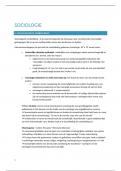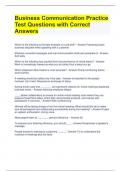Invitation to Biology 1
____________________________________________________________________________________________ INVITATION TO BIOLOGY Chapter Outline 1.1 APPLICATION: SECRET LIFE OF EARTH 1.2 LIFE IS MORE THAN THE SUM OF ITS PARTS Life’s Organization 1.3 HOW LIVING THINGS ARE ALIKE Organisms Require Energy and Nutrients Homeostasis DNA is Hereditary Material 1.4 HOW LIVING THINGS DIFFER 1.5 ORGANIZING INFORMATION ABOUT SPECIES A Rose by Any Other Name … Distinguishing Species 1.6 THE SCIENCE OF NATURE Thinking about Thinking The Scientific Method Research in the Real World Potato Chips and Stomach aches Butterflies and Birds 1.7 ANALYZING EXPERIMENTAL RESULTS Sampling Error Bias in Interpreting Results 1.8 THE NATURE OF SCIENCE What Science Is What is Not Science What Science is Not 1.10 THE SECRET LI FE OF EARTH (REVISITED) SUMMARY SELF -QUIZ DATA ANALYSIS EXERCISE CRITICAL T HINKING Core Concepts Systems : Complex properties arise from interactions among components of a biological system. We can understand life by studying it at increasingly inclusive levels, starting with atoms that compose matter, and extending to the biosphere. Each level is a biological system composed of interacting parts. Interactions among the components of a system give rise to complex properties not found in any of the components. The movement of matter and energy through ecosystems influences interactions among organisms and their environment. Evolution: Evolution underlies the unity and diversity of life. Shared core processes and features that are widely distributed among organisms provide evidence that all living things are linked by lines of descent from common ancestors. All biological systems are sustained by the exchange of matter and energy; all store, retrieve, transmit, and respond to information essential for life. Biology The Unity and Diversity of Life, 15e Cecie Starr, Ralph Taggart, Christine Evers, Lisa Starr (Instructor Manual All Chapters, 100% Original Verified, A+ Grade) Chapter One Process of Science : The field of biology consists of and relies upon experimentation and the collection and analysis of scientific evidence. Science addresses only testable ideas about observable events and processes. Observation, experimentation, quantitative analysis, and critical thinking are key aspects of scientific research. Carefully designed experiments that yield objective data help researchers unravel cause -and-effect relationships in complex biological systems. Key Terms animals archaea atoms bacteria biodiversity biology biosphere cell community consumers control group critical thinking data deductive reasoning dependent variable development DNA ecosystem emergent properties energy eukaryotes experiment experimental group fungus, fungi genus, genera growth homeostasis science hypothesis independent variable inductive reasoning inheritance law of nature model molecules nucleus nutrient organs organ systems organism photosynthesis plants population prediction probability producer prokaryotes protists reproduction sampling error science scientific method scientific theory species specific epithet statistically significant taxon taxonomy tissue s traits variable Lecture Outline 1.1 Application: Secret Life of Earth A. Are there any places left on Earth that have not been explored? 1. Yes: a 2005 trip to New Guinea discovered many new plant and animal species . 2. New species, mostly smaller organisms, continue to be discovered every day . B. The more we learn about nature, the more we realize how much more there is to learn . C. This text helps students discover “life,” that is, how orga nisms are constructed, how they live, etc. 1.2 Life Is More Than the Sum of Its Parts Learning Objectives : • Describe the successive levels of life ’s organization. • Explain the idea of emergent properties and give an example. A. Life’s Organization 1. Biologists examine all aspects of life, from the smallest atom to global communities. 2. Cells are the fundamental building blocks of life. 3. The levels of organization grow in complexity: atoms → molecules → cells → organism . Invitation to Biology 4. Multicell ular organisms have increasingly complex levels of organization that result in tissues → organs → organ systems → organisms → populations → communities → ecosystems → biosphere. 5. At each successive level of organization , emergent properties can be detected . 1.3 How Living Things Are Alike Learning Objectives : • Distinguish producers from consumers. • Explain why homeostasis is important for sustaining life. • Explain how DNA is the basis of similarities and differences among organisms. A. Organisms Require Energy and Nutrients 1. Energy, the capacity to do work, moves through the universe in a series of transfers. 2. Higher levels of organization would cease without energy inputs from the environment. 3. Energy flows from the sun. a. Producers (plants and other photosynthetic organisms) make their own food by converting sunlight to usable energy. b. Consumers (animals and decomposers) cannot make food, but use other organisms to obtain their energy and molecular building blocks (carbohydrates, fats, and proteins). 4. Energy flows one way through producers, consum ers, and back to the environment. 5. Energy flow is not 100 percent efficient , as heat (a form of energy) is lost at each transfer stage. B. Homeostasis 1. To survive, o rganisms must respond to environmental stimuli and make controlled responses to heat and cold, harmful substances, and varying food supplies. 2. All organisms undergo homeostasis, a state in which the conditions of the “internal environment” are maintained within tolerable limits. C. DNA is Hereditary Material 1. Deoxyribonucleic acid, or DNA, is considered the signature molecule of life. a. DNA carries the hereditary instructions that allow organisms to grow and reproduce. 2. Inheritance is the acquisition of traits through the transmission of DNA from parents to offspring. 1.4 How Living Things Differ Learning Objectives • List two characteristics of prokaryotes. • Name the four main groups of eukaryotes. A. Organisms vary greatly; thus , we rely on classification schemes to organize our understanding about the diversity of life. 1. One way animals can be classified is based on whether their DNA is contained in a nucleus. Bacteria and archaea are single -celled organisms with DNA , but lack a nucleus. 2. Eukaryotes are organisms with DNA housed inside the nucleus. a. Protists are simple eukaryotes that are often single -celled organisms. b. Fungi are eukaryotes that often act as decomposers. c. Plants are photosynthetic eukaryotes that serve as food for many other organisms. d. Animals are multicellular eukaryotes that act as consumers. 1.5 Organizing Information about Species Learning Objectives: • Explain how organisms are named in the Linnaean system. Chapter One • Describe the way species are classified in taxa. • List the taxa from species to domain. • Describe the “biological species concept” and explain its limitations. A. “A rose by any other name…” Taxonomy is a system of naming and classifying species. 1. Carolus Linnaeus developed the two -part naming system that is still in use today. a. The first part of the name is the genus. b. The second part of the name is known as the specific epithet. 2. Species are classified into taxa, which are groups of organisms that share a unique set of features. B. Distinguishing Species 1. Traits can vary and are used to classify organisms. a. Traits may be based on morphology or processes, such as DNA analysis. b. We classify organisms based on their shared traits. Each rank, or taxon (plural, taxa), is a group of organisms that share a unique set of inherited traits. 2. Ernst Mayr developed the biological species approach, which is based on the ability of organisms to produce fertile offspring. 1.6 The Science of Nature Learning Objectives : • Describe critical thinking and give some examples of how to do it. • Distinguish between inductive and deductive reasoning. • Use suitable examples to explain dependent and independent variables. • Explain how a control group is used in an experiment. • List the tasks that are part of the scientific method. • Give an example, real or hypothetical, of an experiment in which a dependent variable is affected by an independent variable. A. Thinking about Thinking 1. All scientific research involves critical thinking —judging information before accepting it. 2. Students should avoid accepting information without question, or failing to consider recognized biases, when processing new scientific information. B. The Scientific Method 1. Common research practices follow a step -by-step approach known as the scientific method . a. Observe an aspect of nature . b. Ask a question or state a problem relating to the observation. c. Develop hypotheses (testable explanations) of the observed phenomenon or process. d. Make a prediction of what the outcome would be if the hypothesis were valid (deductive, “if -then” reasoning). e. Test predictions by experiments, models, and observations. f. Assess the results of such tests. g. Report objectively on the tests and conclusions . C. Research in the Real World 1. Potato Chips and Stomach aches a. A Chicago theater was chosen as a “laboratory” to determine if the synthetic fat called Olestra caused gastrointestinal cramps. b. Both control and experimental groups were random samples of moviegoers who had no idea which fat -impregnated chips they were eating. c. Later, the moviegoers were called at home to determine the extent of gastrointestinal distress .







